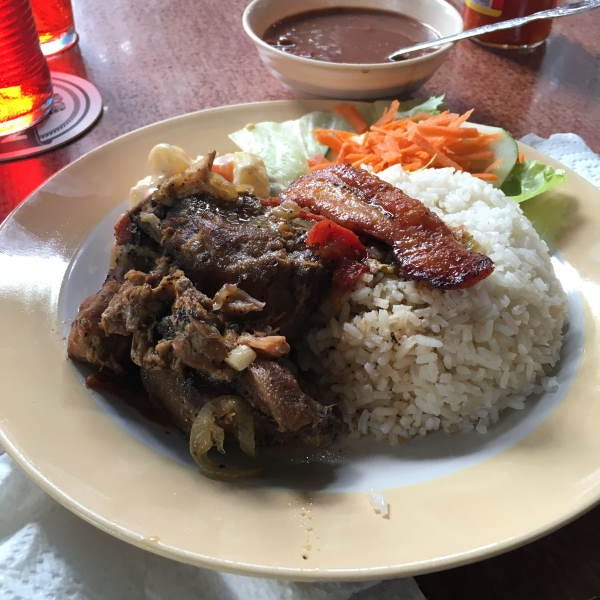On Eating Gibnut
The year was 1985, and Queen Elizabeth II was on a whirlwind tour of the commonwealth. During a ceremonial dinner in Belize, she was served a stew of their national dish, gibnut. “Tastes like rabbit,” she remarked.
The gibnut, alas, is a rat.

Fast forward to recent-ish days, and I, too, had the pleasure of trying the dish in Belize. One might think it would be easy to find rat-based stews anywhere in the world, but the gibnut is an elusive rodent. It is only sporadically available in traditional Belizean restaurants, and we were told you have better luck finding it in outlying areas. For us, that was San Ignacio on the border to Guatemala.
One often tends to compare unfamiliar proteins to chicken, and while gibnut-meat technically is white, it is wholly different from its often flavorless cousins. Its fatty, stewed palate is more in line with the comfort foods associated with colder climates—a good reminder not to stereotype national dishes on geography. Ultimately, though, it is entirely its own thing. I can understand why the Queen had a hard time placing the flavor. If pressed, I would compare it to the Northern European take on pork ribs. The taste lies in the fat.
After receiving the Queen’s blessing, the gibnut received the distinction of being the “royal rat.” Presumably, few other rodents were in the running, but if the Queen is OK with the gibnut, I don’t see why I should be a contrarian.
